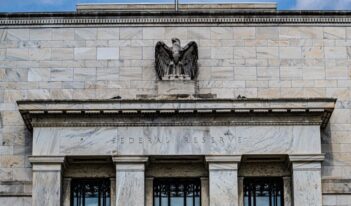
Consumer protection agency is sensibly structured to resist the dangers of client politics.
Some industry and political actors oppose the Consumer Financial Protection Bureau (CFPB) on the grounds that its institutional design ensures its lack of accountability. Specifically, opponents point to the CFPB’s regulatory and financial independence and to the fact that a single director heads the Bureau rather than a bipartisan panel of commissioners. But do these institutional features really make the CFPB unaccountable?
Congressional critics do correctly note that the structure of the CFPB differs from other independent administrative agencies. Unlike most independent agencies, a single director heads the Bureau, rather than a panel of commissioners appointed for fixed (and often staggered) terms. The Bureau’s annual budget is virtually guaranteed and nearly free from congressional revision, whereas most independent agencies have to seek funding from Congress and often face annual appropriations battles.
But to focus on the Bureau’s financial independence and its single director misses the distinctive political deal struck when Congress created the CFPB. Typically, an administrative agency is structured as an independent agency in order to insulate regulators from interest group influence. Because capture often is accomplished through political channels, independent agencies also have been structured to be insulated from executive pressure.
By contrast, the CFPB has been uniquely and intentionally structured to insulate it not only from interest group influence and executive interference, but also from congressional control. This feature of the CFPB’s design, while unusual, is not anti-democratic; it is precisely what the democratically elected Congress that enacted the Dodd-Frank Act sought to accomplish. Like Ulysses tied to the mast, the institutional design of the Bureau works like a pre-commitment device.
Congress deliberately constructed CFPB to lock-in a commitment to consumer protection. Given its diffuse benefits and narrowly defined costs, consumer protection legislation has always been difficult to enact and even more difficult to enforce. The “client politics” of the powerful financial industry does not make it easy to enact consumer protection legislation in the first place. It took the subprime mortgage crisis, for example, to enable Congress to overcome industry resistance and pass the Dodd-Frank Act that created the CFPB. But members of Congress understood that once the fevers of the financial crisis subside, the diffuse benefits and narrowly defined costs of regulation will lead CFPB to face the same industry opposition when it seeks to implement the Dodd-Frank Act.
Indeed, the CFPB has already faced congressional threats of revision and repeal, starting almost immediately after Dodd-Frank’s passage. The Senate has not yet consented to the President’s appointment of a Director to the Bureau. After President Obama sought to engineer around these obstructions by appointing Richard Cordray as Director using his recess appointments power, the D.C. Circuit Court of Appeals held the appointment unconstitutional, raising substantial questions as to whether regulations promulgated under Cordray’s watch will themselves withstand judicial scrutiny.
CFPB’s accountability to Congress and other political actors is not limited to whether the Senate will bless Cordray or any nominee for the position of Director. By statutory design, the CFPB shares its regulatory space with numerous political actors. This design aims to permit the Bureau to rise above the client politics that normally surround financial regulation and protect the diffuse interests of consumers, even after concerns about the subprime mortgage crisis abate. To a greater extent than many admit, this design does in fact hold the CFPB accountable to political forces.
Like many agencies, the CFPB is vested with jurisdiction of several different sorts, most importantly authority both to issue and enforce regulations. The scope of the Bureau’s jurisdiction differs depending on whether it is writing regulations, monitoring for compliance, or prosecuting non-compliance.
The Bureau’s independence is greatest when it issues regulations. Congress granted the CFPB “exclusive” authority to craft the rules needed to implement a wide range of federal laws governing consumer financial protection. Nonetheless, the CFPB sits in a regulatory space it shares with other regulators; even its ostensibly “exclusive” rulemaking authority is subject to oversight, consultation, and coordination.
While the CFPB is more independent than most administrative agencies, the Bureau still holds institutional connection and obligations to Congress, the Federal Trade Commission (FTC), and various prudential regulators, including the newly created Financial Stability Oversight Council. To be sure, the FTC and prudential regulators do not hold veto power over the Bureau, but both Congress and the Council can set aside CFPB regulations. Reversal is not as simple as some would like, but the Bureau is accountable to all these officials, at least pragmatically and politically.
Moreover, the CFPB is less independent (and so more accountable) when viewed as an enforcement agent. Dodd-Frank divides the Bureau’s power to monitor and enforce the federal consumer financial laws in complex ways among federal regulators and between federal and state authorities. While the CFPB holds greater enforcement authority over large financial institutions, its ability to examine even these “large banks” is shared with prudential regulators. With banks and other financial institutions with assets of $10 billion or less, the CFPB must rely on the relevant prudential regulator to enforce consumer financial protection regulation. And Dodd-Frank retains the FTC as a contiguous regulator of “covered persons” that are not banks.
Finally, the CFPB’s rulemaking and enforcement authorities are importantly interconnected. Given that regulation is only as effective as regulators are willing to enforce the law in the books, this shared enforcement jurisdiction holds the key to the CFPB’s accountability to political and industry forces. Because the Bureau shares enforcement jurisdiction with the Office of the Comptroller of the Currency (OCC), the National Credit Union Administration (NCUA), and other bank regulators, as a practical matter it will also have to take prud
ential regulators’ concerns into account when promulgating regulations. Although only the Financial Stability Council can veto a regulation promulgated by the Bureau, CFPB regulations might well be undermined by other regulators’ inaction as enforcement agents.
Dodd-Frank crafts a complex regulatory space. This complex space means that descriptions of the CFPB’s jurisdiction are best portrayed with Venn diagrams. Prudential regulators cannot alone veto regulation issued by the CFPB, but they can comment in the public record, lobby for the Council to set the rules aside, and try to thwart enforcement efforts. Moreover, although the CFPB is financially independent and headed by a single director, Congress can exert influence on the Bureau through its influence on other administrative agencies as well as its power to reverse CFPB regulations legislatively and modify or repeal the legislation that created the Bureau.
Dodd-Frank grants the CFPB the power to promulgate regulations that political actors and industry lobbyists disparage, but it also creates incentives for the agency to seek consensus among various other regulators. Because the Bureau is in fact designed so that it is accountable to a wide range of political actors, it just might accomplish the sort of effective consumer protection regulation that eluded earlier regulators.




